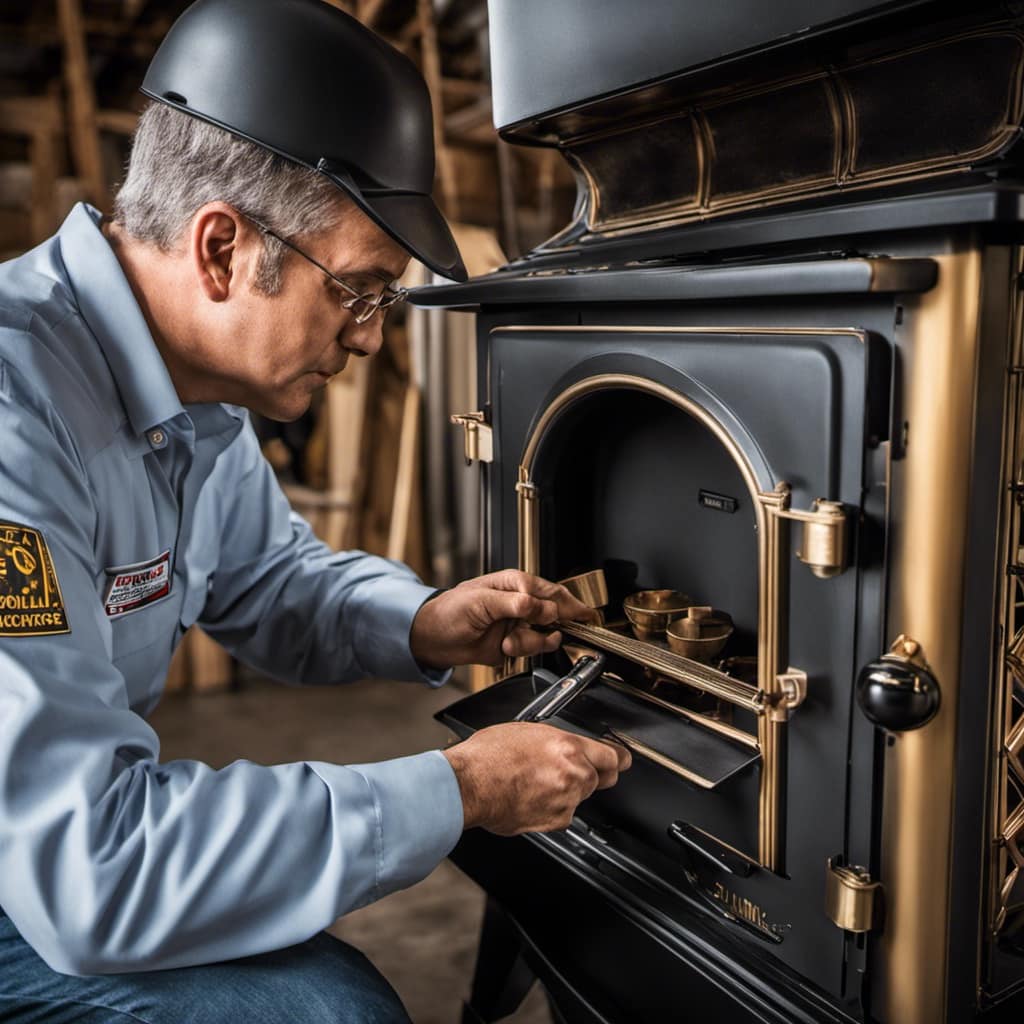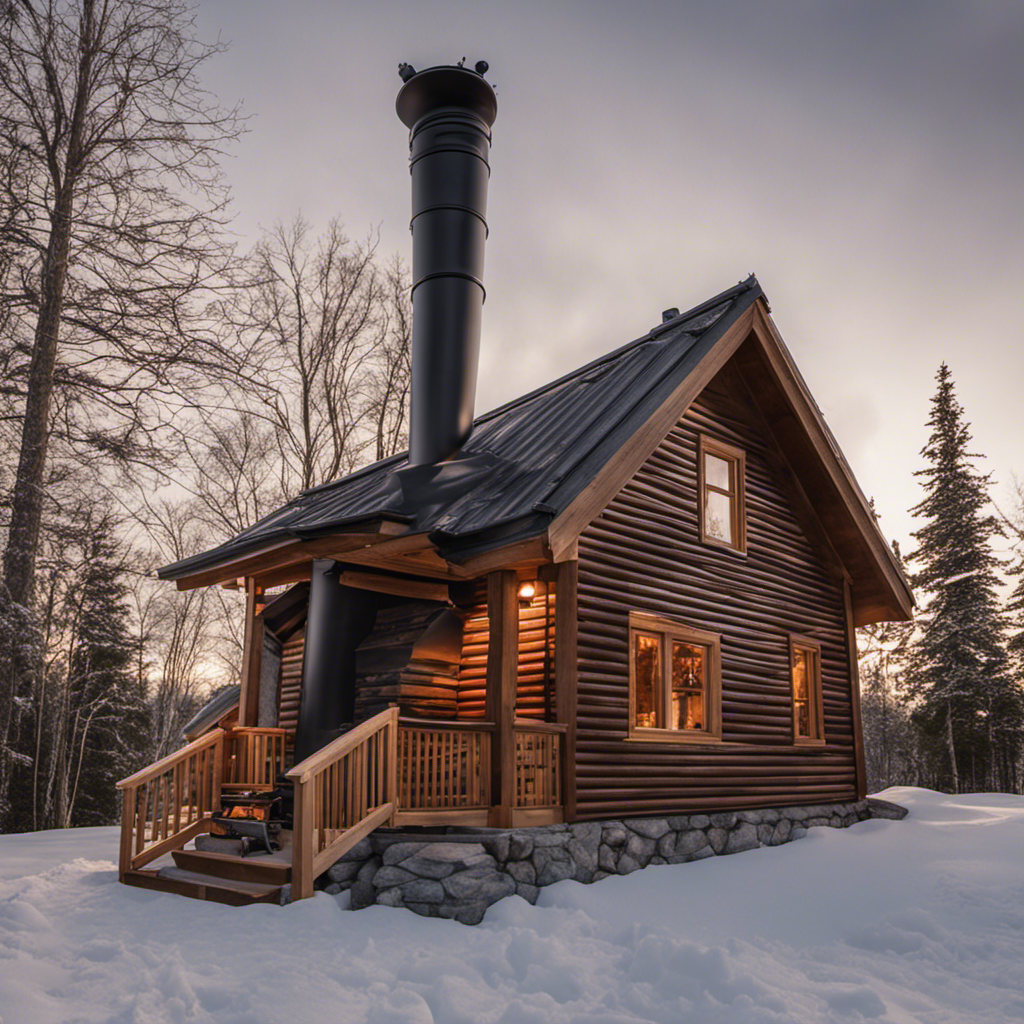As someone who has operated wood stoves for a long time, I have come to understand that maintaining a steady temperature is akin to controlling a wild fire. It involves being attentive to insulation, choosing the right type of wood, and regulating the airflow.
In this article, I’ll share my knowledge and tips on how to maintain a consistent and cozy temperature with your wood stove. By following these steps, you’ll be able to enjoy the warmth and comfort of your wood stove all winter long.
Key Takeaways
- Use a stove thermometer to monitor the temperature inside the stove.
- Adjusting dampers allows for temperature control and even heat distribution.
- Regular chimney maintenance prevents restricted airflow and potential hazards.
- Cleaning the stove removes ashes and debris, improving efficiency and extending its lifespan.
Properly Insulate Your Home
I definitely need to add some more insulation to my home. As an expert in energy efficient solutions, I know the importance of proper insulation in maintaining a comfortable temperature and reducing energy consumption.
Insulation acts as a barrier, preventing heat from escaping during winter and keeping it out during summer. It helps to create a more consistent indoor temperature, reducing the reliance on heating and cooling systems.
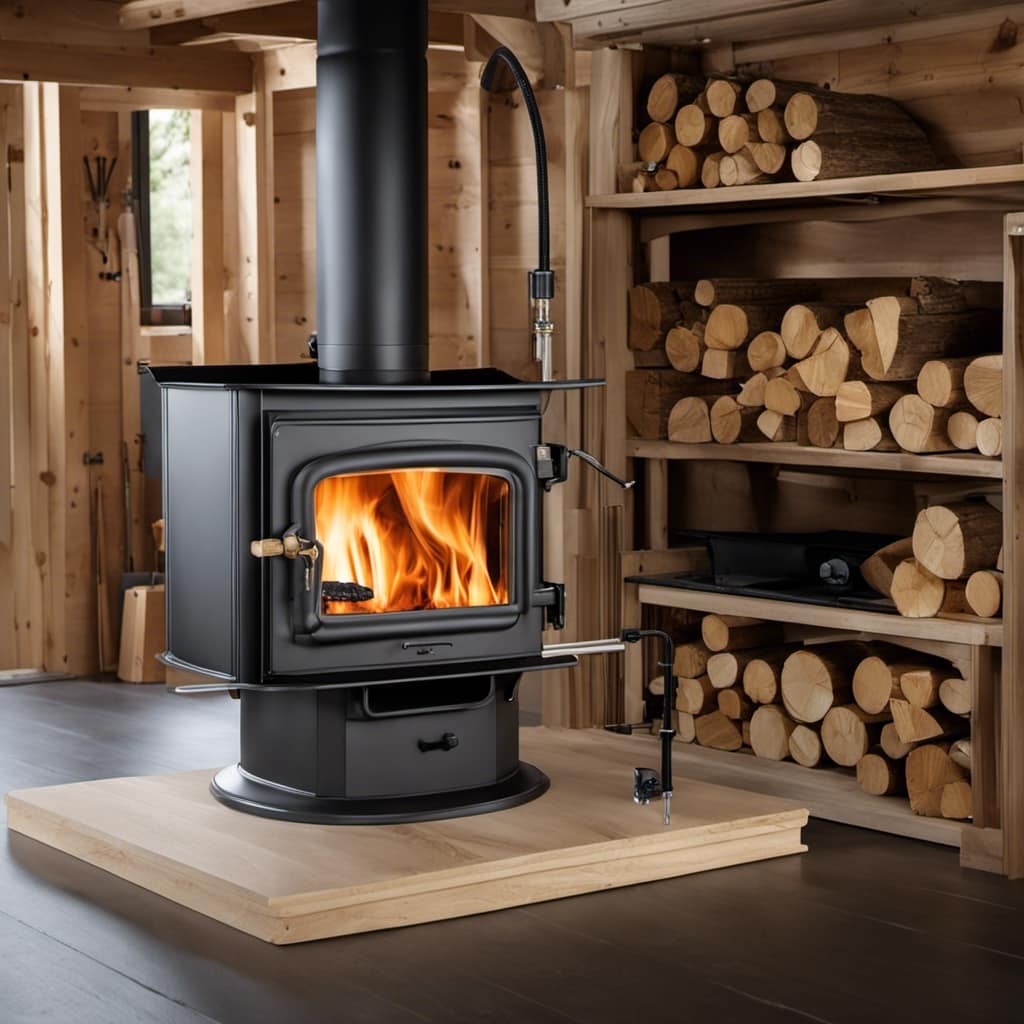
One effective technique to improve insulation is weatherstripping. By sealing gaps around windows and doors, weatherstripping prevents drafts and heat loss. It’s a simple and cost-effective solution that can significantly reduce energy bills.
Additionally, adding insulation to attics, walls, and floors can further enhance the energy efficiency of a home, making it more comfortable and environmentally friendly.
Choose the Right Wood
Choosing the right wood for my wood stove is crucial to ensure efficient and clean burning. One of the most important factors to consider is the moisture content of the wood, also known as seasoned wood. Seasoned wood has been properly dried, with a moisture content of around 20% or less. Burning wet or green wood can lead to a host of problems, including poor combustion, excessive smoke, and increased creosote buildup in the chimney.
It’s essential to use wood that has been properly seasoned to achieve optimal heat output and minimize pollution. To determine if the wood is seasoned, I check the moisture content using a moisture meter. This helps me ensure that I’m using the right wood for my wood stove, resulting in a more efficient and environmentally-friendly burn.
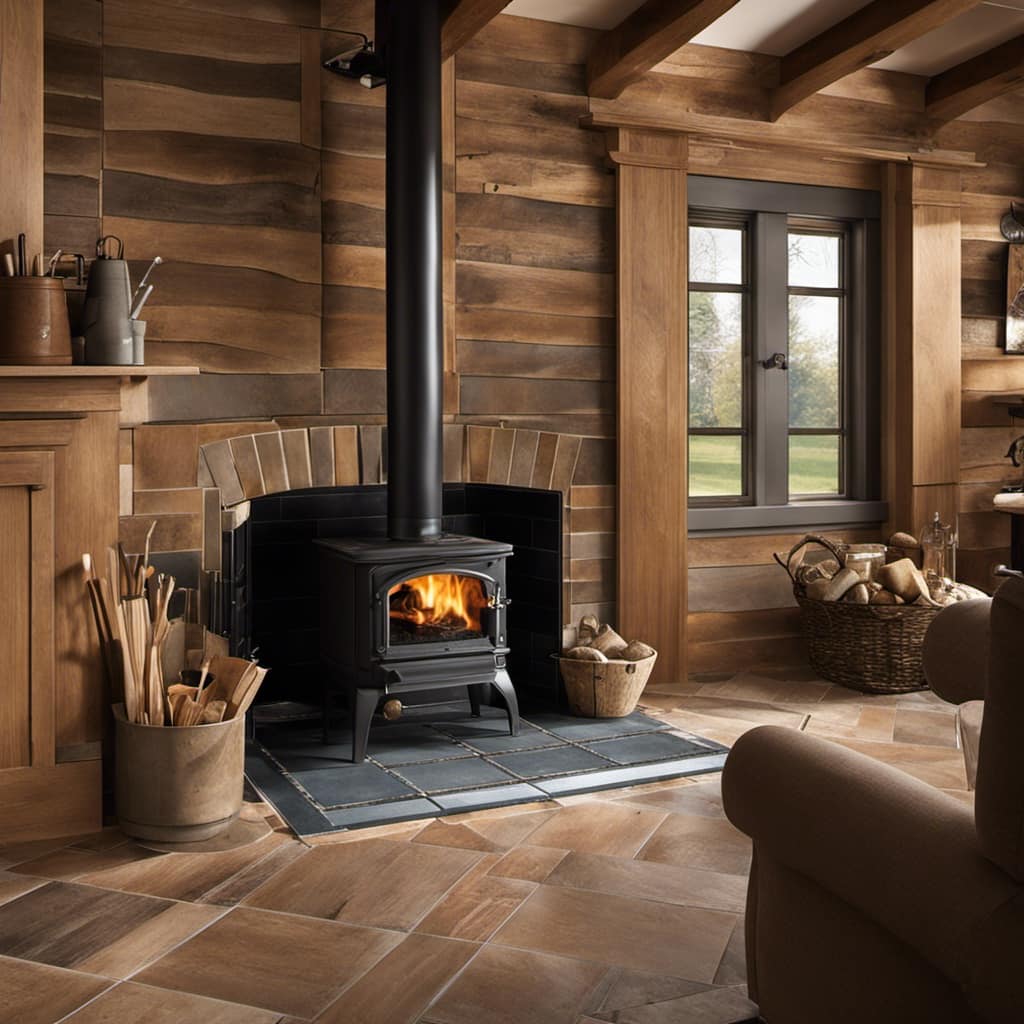
Use a Stove Thermometer
Sometimes, I rely on a stove thermometer and find it essential to ensure that my wood stove is operating at the right temperature. Monitoring the temperature is crucial to achieve efficient and safe wood stove operation. By using a stove thermometer, I can accurately monitor the temperature inside the stove and make necessary adjustments to the airflow.
The temperature inside the stove directly affects the combustion process and the heat output. If the temperature is too low, the fire may not burn efficiently, leading to incomplete combustion and the accumulation of creosote in the chimney. On the other hand, if the temperature is too high, it can cause overheating and potentially damage the stove or surrounding materials. By monitoring the temperature and adjusting the airflow accordingly, I can maintain a steady and optimal temperature for efficient wood stove operation.
To control the airflow, wood stoves are equipped with dampers. Dampers are adjustable openings that allow air to enter or exit the stove, regulating the combustion process and heat output. By opening the damper, more air is allowed into the stove, resulting in increased combustion and heat production. Similarly, closing the damper restricts the airflow, reducing the combustion and heat output. This control over the airflow enables me to fine-tune the temperature inside the wood stove.
Control Airflow With Dampers
To achieve optimal temperature control, it is important to adjust the dampers accordingly and fine-tune the airflow in the wood stove. By managing the airflow, we can effectively control the temperature and ensure even heat distribution throughout the space.
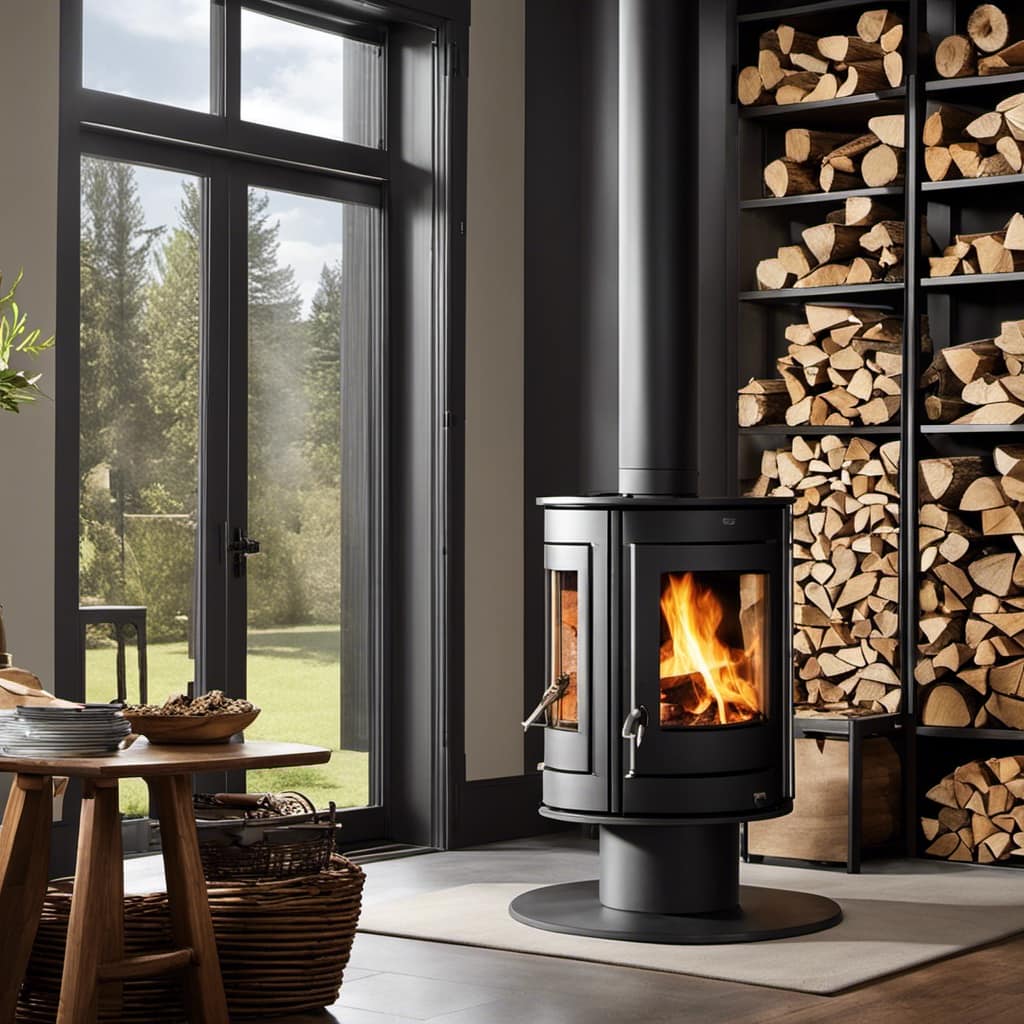
One way to adjust the temperature is by using the dampers on the wood stove. These adjustable vents allow you to regulate the amount of air flowing into the firebox, thus controlling the intensity of the fire. By opening the dampers fully, you can increase the airflow and raise the temperature. Conversely, closing the dampers partially restricts the airflow, resulting in a lower temperature.
In addition to adjusting the dampers, you can also manage heat distribution by strategically placing the wood in the firebox. By arranging the logs closer together, you can create a more concentrated heat source, while spreading them out can help to distribute the heat more evenly.
Overall, by actively adjusting the dampers and fine-tuning the airflow, you can achieve optimal temperature control and effectively manage heat distribution in your wood stove.
| Tips for Adjusting Temperature and Managing Heat Distribution |
|---|
| 1. Adjust the dampers to control airflow and temperature. |
| 2. Open the dampers fully for higher temperatures. |
| 3. Close the dampers partially for lower temperatures. |
| 4. Arrange the wood strategically for even heat distribution. |
Maintain Regular Cleaning and Maintenance
I make sure to regularly clean and maintain my wood stove in order to prevent any build-up and ensure its optimal performance.
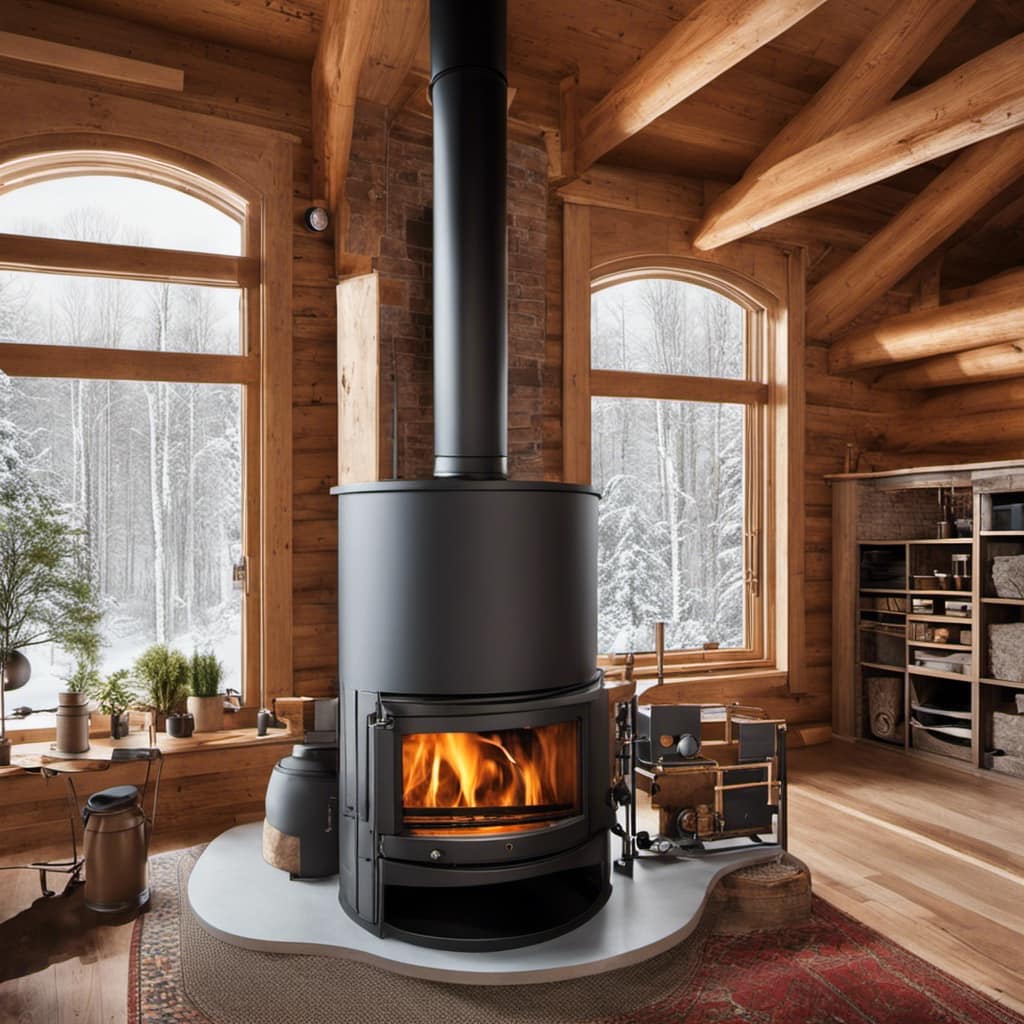
Regular chimney maintenance is crucial to keep the stove functioning properly. Over time, creosote and other debris can accumulate in the chimney, which can lead to restricted airflow and potential hazards such as chimney fires. By scheduling regular chimney cleanings, I can remove any obstructions and ensure proper ventilation.
Additionally, I clean the stove itself, removing ashes and debris from the firebox and inspecting the gaskets and seals for any signs of wear or damage. This not only helps with the stove’s efficiency but also extends its lifespan.
Frequently Asked Questions
What Are Some Common Reasons for a Wood Stove to Not Maintain a Steady Temperature?
Some common reasons for a wood stove to not maintain a steady temperature could be improper airflow and fuel management. It’s important to adjust the airflow dampers and use the right amount of fuel to achieve a consistent temperature.
Can I Use a Wood Stove to Heat My Entire Home, or Is It Only Suitable for Specific Areas?
Using a wood stove to heat my entire home has its benefits. The efficiency of a wood stove can provide consistent warmth throughout, but specific areas may require additional heating sources for optimal comfort.
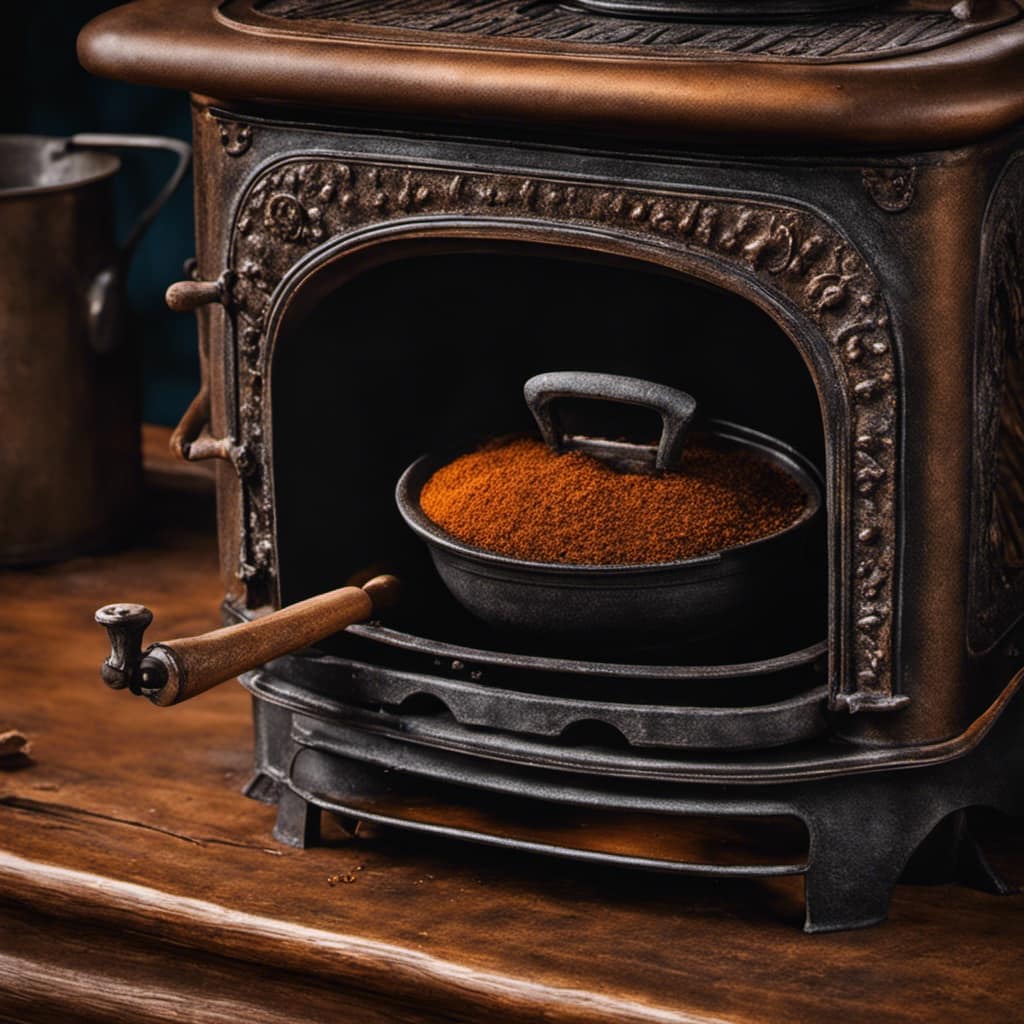
How Often Should I Clean the Chimney of My Wood Stove to Ensure Proper Airflow and Temperature Control?
I clean my wood stove chimney at least once a year to ensure proper airflow and temperature control. Regular chimney cleaning is essential for maintaining efficient heating and preventing potential hazards.
Are There Any Specific Safety Measures I Should Take When Using a Wood Stove to Maintain a Steady Temperature?
To maintain a steady temperature with a wood stove, it’s crucial to prioritize safety precautions and ensure proper ventilation. By taking these measures, you can enjoy the cozy warmth without compromising your well-being.
What Are Some Signs That Indicate My Wood Stove May Need Repairs or Servicing in Order to Maintain a Steady Temperature?
If you notice irregular heat output, difficulty in maintaining a consistent temperature, or excessive smoke, those can be signs that your wood stove may need repairs or servicing for a steady temperature.
Conclusion
In conclusion, maintaining a steady temperature with a wood stove requires proper insulation, the use of the right wood, a stove thermometer, controlling airflow with dampers, and regular cleaning and maintenance.
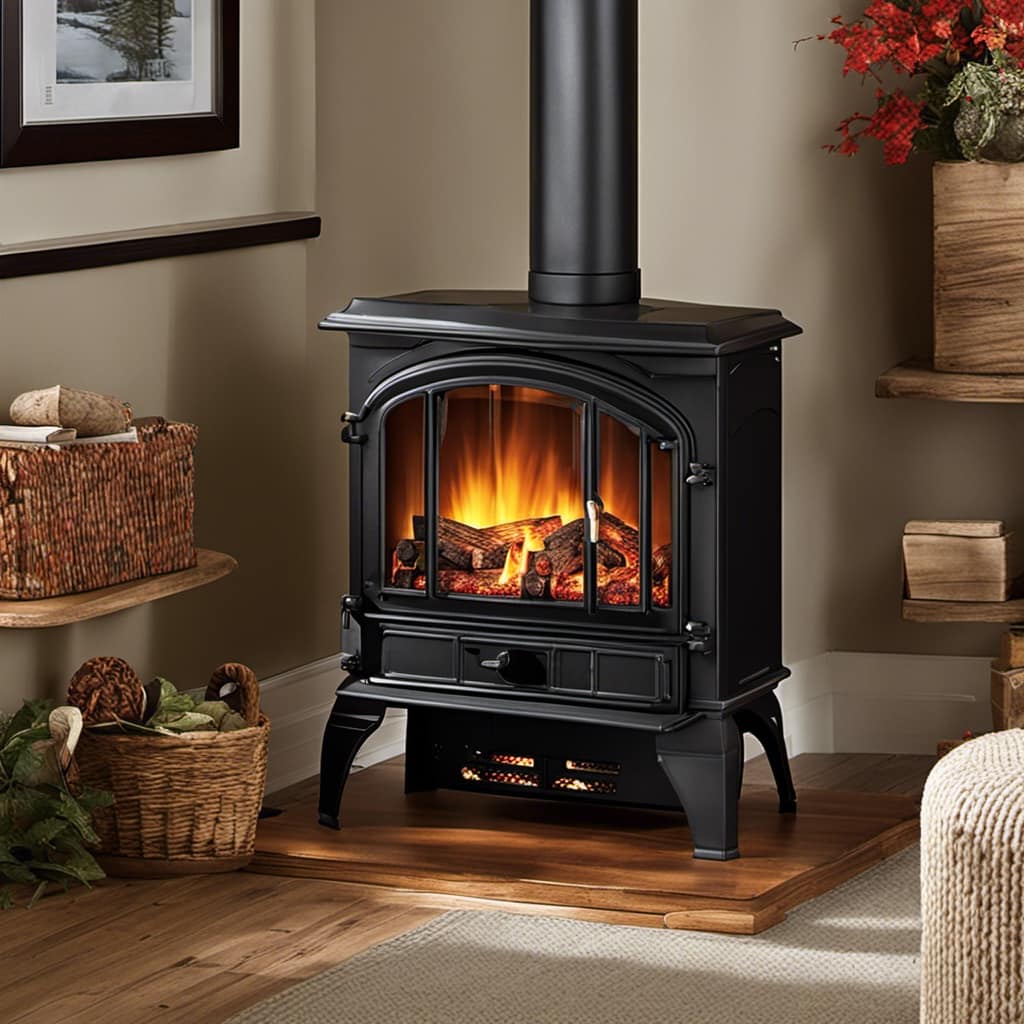
For example, John and Mary insulated their home, used well-seasoned hardwood, installed a stove thermometer, adjusted the dampers to control airflow, and regularly cleaned and maintained their wood stove.
As a result, they were able to enjoy a consistently comfortable and cozy atmosphere throughout the chilly winter months.
Growing up surrounded by the vast beauty of nature, Sierra was always drawn to the call of the wild. While others sought the comfort of the familiar, she ventured out, embracing the unpredictable and finding stories in the heartbeat of nature.
At the epicenter of every remarkable venture lies a dynamic team—a fusion of diverse talents, visions, and passions. The essence of Best Small Wood Stoves is crafted and refined by such a trio: Sierra, Logan, and Terra. Their collective expertise has transformed the platform into a leading authority on small wood stoves, radiating warmth and knowledge in equal measure.





